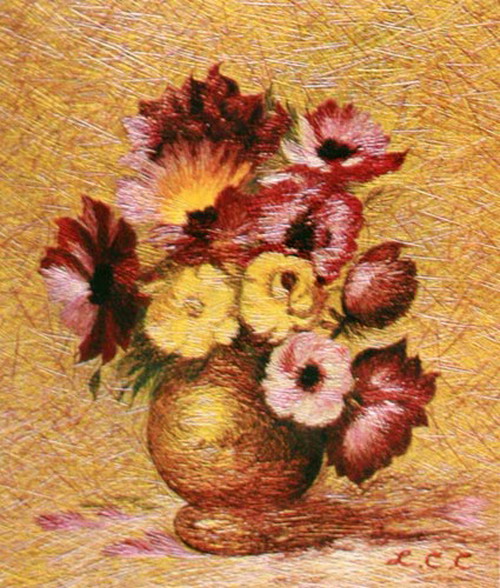Jingzhou embroidery
- Source: Hubei Provincial People's Government
- 08/18/2022 15:02
- 0 312

As early as the Spring and Autumn and Warring States Periods, embroidery in Jingzhou has reached a very high level. The silk woven fabrics unearthed from the Mashan No. 1 tomb of the Chu State in the Warring States Period, which was reputed as "a treasure house of silk," are the earliest and best-preserved embroidered crafts discovered in China and the world.
After the Qin and Han dynasties, on the basis of inheriting the embroidery tradition of the Chu State, the weaving methods were developed into direct knitting, horizontal knitting and braid knitting. The application of color cords became more mature. In the Tang Dynasty, the silkworm industry advanced and a large embroidery industry emerged. Jingzhou became one of the three ancient centers of Han embroidery.
In the Ming and Qing dynasties, to meet the need of imperial ceremonies, religions and operas, Jingzhou and Hankou became two embroidery bases of Hubei. In modern times, Jingzhou is still a central area of Han embroidery. The embroidery workshops and shops contact folk artists of Han embroidery to process embroidery works. Large indoor works characteristic of the art form and the subject matter often includes "108 stars of destiny," "Guo Ziyi offers birthday felicitations," and "immortals congratulate birthday" among others.
Medium-sized embroidery works include dooly curtains, table cloths, chair cushions, drum covers and more. The subject matter of these include, "the eight immortals crossing the sea," "promotion of three continual ranks," "Kylin sending a son." Small embroidery works are mostly cloth ornaments, with the patterns like dragon, phoenix, mandarin duck and flower. They are colorful and vivid. The modern Han embroidery workshops are concentrated in Biaheqiao inside the ancient city of Jingzhou.